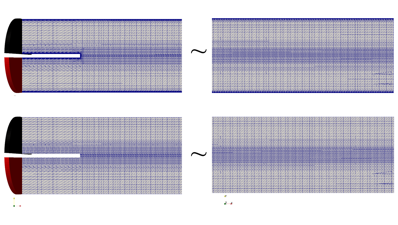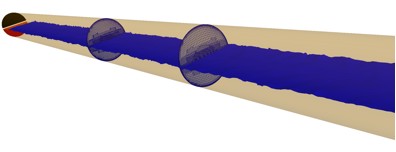Reports: ND952177-ND9: Direct Numerical Simulation and Experiment of Gas-Liquid Flow in Horizontal Pipelines: A New Approach
Marcus Herrmann, DEng, Arizona State University
Kangping Chen, PhD, Arizona State University
Figure 1: Interface-refined mesh (bottom) for initial
condition and DNS mesh (top).
Inflow Boundary Conditions
Figure 2: Example of velocity magnitude profiles, two
phases, single time instance. Multi-phase Outlet Treatment
Figure 3: Mesh layout SS to SW transition regime
simulation, phase-interface after five flow-through times. Progress and Cost















